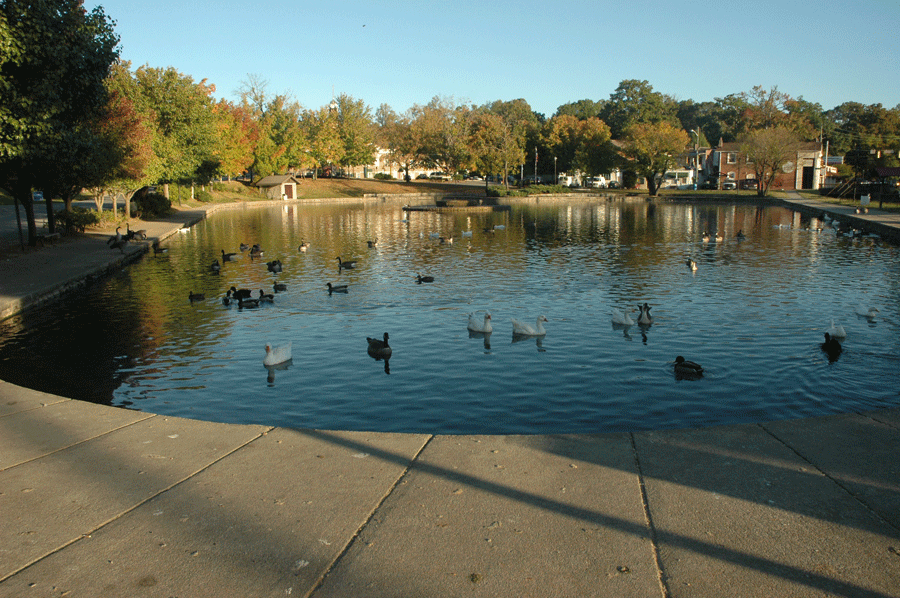The Water Temple
Sunday, November 16, 2014
Sunday, November 2, 2014
First Visit
October 28, 2014
Water source: Fountain City Duck Pond.
11. Fountain City Duck Pond. West of Broadway at Cedar Lane. Knox Co. Knoxville TN Full sun exposure. Spring Feed Pond N36 02.087 W83 55.967 963 ft 10/12/2014 (McFarland, 2014)
This is Anisonema. It's a flagellate. It has two flagella, one for anchoring itself and one to propel itself.
This is Centropyxis. It's an amoeba with a shell and spines with a concave side.
This is a Coleps. It's a ciliate with a barrel-shaped body. It moves around very fast, and it took forever to get a good picture of it.
This is a Cyclops. It's actually an invertebrate. This one wasn't moving much when we found it. We noticed some internal movement, however. We decided that the poor thing was close to death. RIP.
This is Euchlanis. It's an invertebrate. It uses cilia to move around.
Dr. McFarland fed our MicroAquariums this week on October 24th.
"Atison's Betta Food" made by Ocean Nutrition, Aqua Pet Americas, 3528 West 500 South, Salt Lake City, UT 84104. Ingredients: Fish meal, wheat flower, soy meal, krill meal, minerals, vitamins and preservatives. Analysis: Crude Protein 36%; Crude fat 4.5%; Crude Fiber 3.5%; Moisture 8% and Ash 15%. (McFarland, 2014)
Bibliography
McFarland, Kenneth [Internet] Botany 111 Fall 2014. [cited 2 November 2014 ]. Available fromhttp://botany1112014.blogspot.com/
Monday, October 20, 2014
In the beginning
My water source: Fountain City Duck Pond

11. Fountain City Duck Pond. West of Broadway at Cedar Lane. Knox Co. Knoxville TN Full sun exposure. Spring Feed Pond N36 02.087 W83 55.967 963 ft 10/12/2014

11. Fountain City Duck Pond. West of Broadway at Cedar Lane. Knox Co. Knoxville TN Full sun exposure. Spring Feed Pond N36 02.087 W83 55.967 963 ft 10/12/2014
Getting Ready:
1. Obtain a MicroAquarium™. It will have a glass tank, a stand holder and lid.
2. Using the color dots provided, code your tank as follows.
a. On the left hand side edge, place three colored dots in a vertical column as follows
i. The top dot will be the color designated for your lab section.
ii. The second dot will indicate the table you sit at during lab.
iii. The third dot will be the seat number at your table.
b. Now write your initials on the three colored dots.
3. Using a pipet, extract water from one of the containers on the lab bench or from water sources in the greenhouse or from the extraction you have created.
a. Extract enough water from the bottom of the container to fill the MicroAquarium™ tank about 1/3 full.
b. Extract the next 1/3 of water for your tank from the middle layer.
c. Then fill the rest of your tank with water from the surface.
4. Place your tank in its stand, then decorate it with some plant parts or mosses or other objects provided.
I added these plant parts and mosses to my aquarium:
Amblestegium varium (Hedwig) Lindberg. Moss.
Collection from: Natural spring. at Carters Mill Park, Carter Mill Road, Knox Co. TN. Partial shade exposure. N36 01.168 W83 42.832. 10/12/2014
Collection from: Natural spring. at Carters Mill Park, Carter Mill Road, Knox Co. TN. Partial shade exposure. N36 01.168 W83 42.832. 10/12/2014
Utricularia gibba L. Flowering plant. A
carnivorous plant. Original material from south shore of Spain Lake (N 35o55 12.35" W088o20' 47.00), Camp Bella Air Rd. East of Sparta Tn. in White Co. and grown in water tanks outside of greenhouse at Hesler Biology Building. The University of Tennessee. Knox Co. Knoxville TN.
10/12/2014
carnivorous plant. Original material from south shore of Spain Lake (N 35o55 12.35" W088o20' 47.00), Camp Bella Air Rd. East of Sparta Tn. in White Co. and grown in water tanks outside of greenhouse at Hesler Biology Building. The University of Tennessee. Knox Co. Knoxville TN.
10/12/2014
Subscribe to:
Comments (Atom)